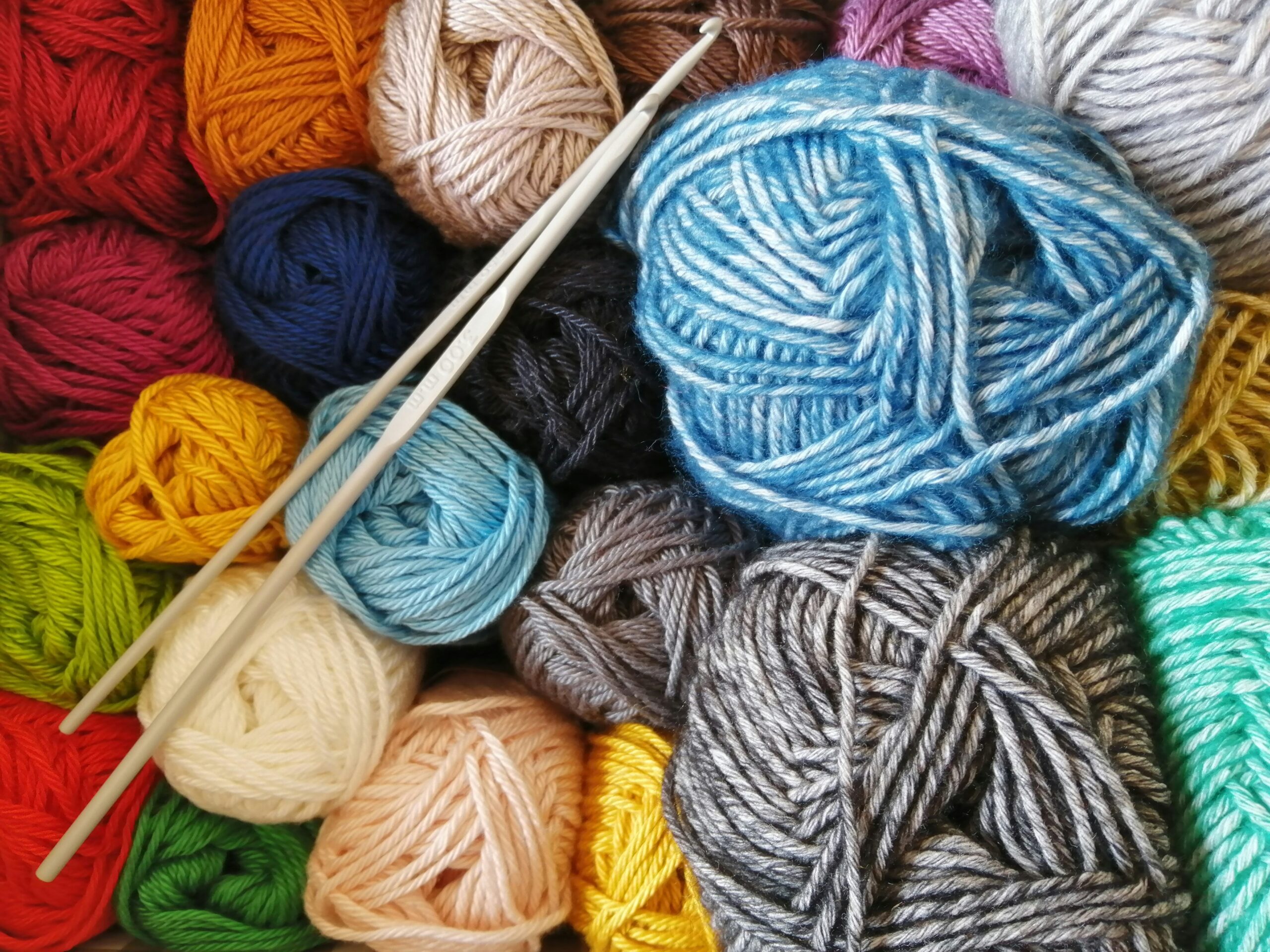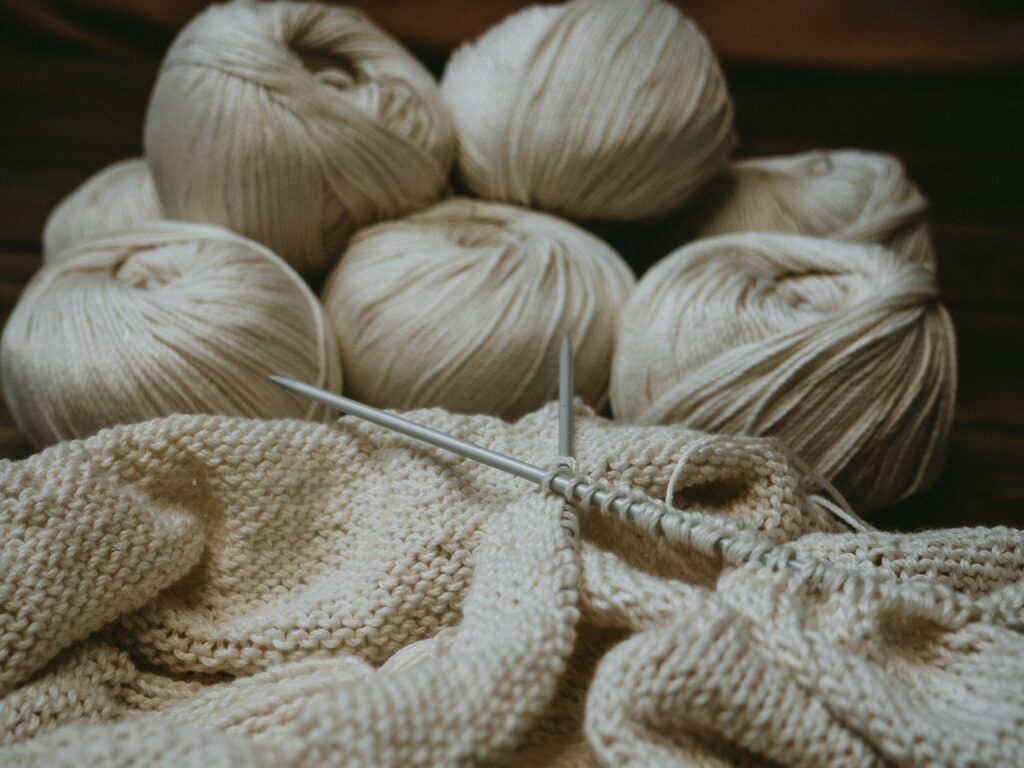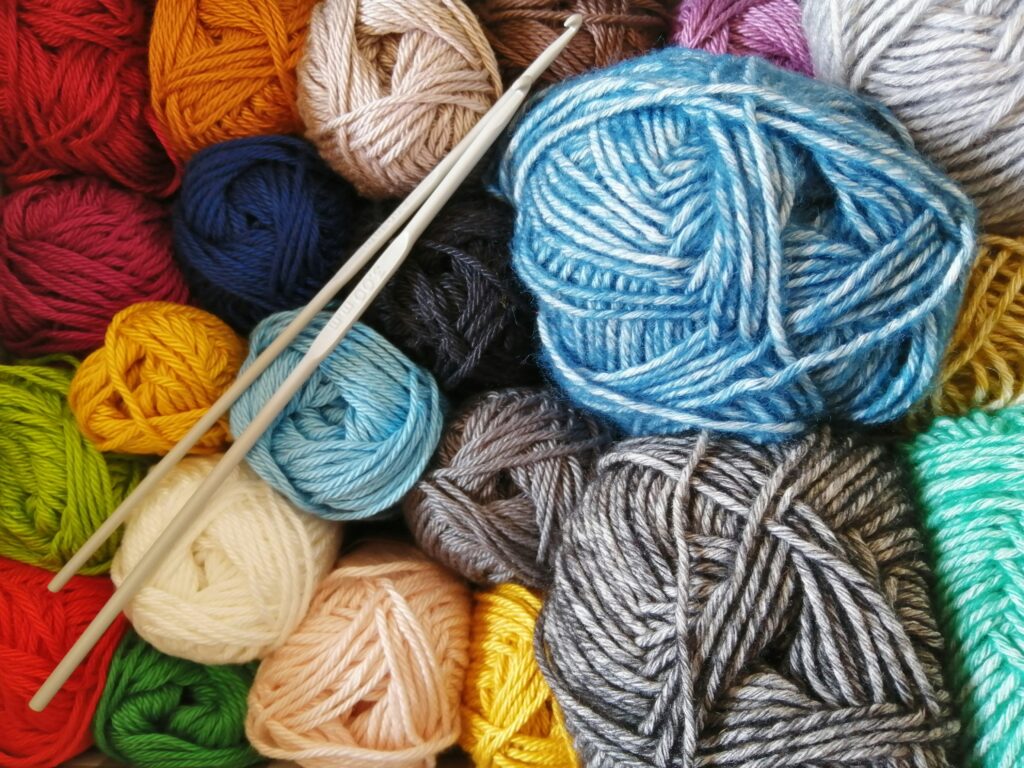
How to choose the right yarn for your knitting projects
When it comes to knitting, one of the most important decisions you’ll make is choosing the right yarn for your project. With so many types of yarn available, it can feel a bit overwhelming at first, but once you understand the basics, the process becomes much easier. Whether you’re creating a cosy sweater, a delicate scarf, or a fun blanket, the yarn you select will have a huge impact on the final outcome of your project.
Let’s take a look at what we can cover in this article:
- Understanding yarn types and materials
- Choosing yarn weight for different projects
- Selecting the right yarn color and texture
- How yarn fiber affects your finished piece
- Not as easy as it sounds: Finding your perfect yarn
Understanding yarn types and materials
Yarn comes in a variety of materials, each with its own unique properties, feel, and look. The most common materials are wool, cotton, and acrylic, but there are many more to choose from depending on your needs and preferences.
Wool
Wool is the classic yarn material, known for its warmth, elasticity, and softness. It’s perfect for cold-weather garments and accessories because it traps air, providing insulation. Wool also has a natural ability to absorb moisture, which keeps you warm even if you sweat. There are different types of wool yarn, such as merino (known for its softness), alpaca (light and fluffy), and lamb’s wool (which is soft and durable). The downside of wool is that it requires more care when washing, as it can shrink or felt in hot water.
Cotton
Cotton yarn is made from the fibres of the cotton plant. It’s breathable, cool, and soft—making it a great option for warmer weather. It’s commonly used for dishcloths, summer garments, and baby items. Cotton yarn doesn’t have the elasticity of wool, so projects made from cotton may feel stiffer and can lose their shape more easily. However, it’s easy to care for, as it can be machine washed and dried, which makes it a popular choice for items that need frequent washing.
Acrylic
Acrylic yarn is synthetic and made from plastic fibres. It’s generally more affordable than natural fibres, and it’s easy to care for—most acrylic yarns are machine washable and dryer-safe. It’s a good option for beginners as it comes in a wide range of colours and is durable enough for everyday wear. However, it doesn’t have the same breathability as wool and can sometimes feel less luxurious. Still, it’s a great option for making blankets, toys, or items that require frequent washing.

Choosing yarn weight for different projects
Yarn weight refers to the thickness of the yarn, which directly affects the texture and appearance of your finished project. The weight of the yarn will influence the pattern you choose and the final result, so it’s essential to pick the right weight for your specific needs. Yarn weights are usually categorised into several types: fingering, sport, worsted, bulky, and more.
Fingering weight yarn is the thinnest type and is often used for delicate projects like socks, shawls, or lacework. Because it’s finer, it requires more time and patience to knit, but the result is light and airy, making it perfect for garments worn in warmer weather.
Worsted weight is one of the most commonly used yarn weights, ideal for a wide range of projects including sweaters, scarves, and hats. It strikes a good balance between thickness and versatility, providing warmth without feeling too heavy. This weight is great for beginners as it works up quickly and is easier to handle.
Bulky yarn is much thicker and faster to knit, making it ideal for blankets, cozy scarves, and chunky sweaters. If you want something that works up quickly, bulky yarn is the way to go. However, it can sometimes feel too heavy for lighter garments, so it’s better suited for items that need extra warmth and thickness.
Choosing the right weight depends on the desired outcome. If you want a lightweight, breathable project, go for fingering or sport weight yarn. If you’re looking for something quick and cozy, bulky weight will be your best bet.
By the way, TL Yarn Crafts has this wonderful guide on how to choose the right yarn everytime:
Selecting the right yarn color and texture
When choosing the colour and texture of your yarn, it’s important to think about your project and personal style.

Colour can dramatically affect the look and feel of your project, so it’s worth taking some time to choose the right shade for your needs.
Colour
Think about the intended use of your project when selecting colour. Bright, bold colours are fun and lively, perfect for accessories like scarves, hats, and toys. Neutral colours, like grey, beige, or black, are great for timeless garments like sweaters and cardigans. If you’re working with a pattern that has intricate stitches or texture, you might want to choose a solid colour so the details stand out. Alternatively, variegated yarn (yarn that changes colour throughout) can add interest and depth to simpler designs.
Texture
The texture of the yarn is just as important as the colour. Some yarns have a smooth texture, making them perfect for patterns with lots of detail. Others have a fluffy, boucle or slubby texture that creates a more rustic look. If you’re making a project where the texture is a focal point, like a textured scarf or shawl, choose a yarn with some texture to it. On the other hand, for more structured or detailed projects, a smooth yarn may be preferable for an even finish.
How yarn fiber affects your finished piece
The fiber of your yarn directly impacts the durability, feel, and washing requirements of your project. Understanding how different fibers react to wear and washing can help you make a more informed decision.
Some fibres, like wool and acrylic, are durable and long-lasting, while others like cotton may lose their shape over time. Wool, for example, is strong and resilient but may require special care, while acrylic is a great option for everyday, low-maintenance projects.
The feel of the yarn is important when considering the comfort of the finished item. For example, merino wool is incredibly soft and smooth, while cotton yarn might feel a bit stiffer. Think about how the yarn will feel against the skin, especially if you’re making garments like scarves or sweaters.
Different fibres have different washing needs. Wool often needs hand washing and air drying, while acrylic is machine washable and can be dried in the dryer. If you want something that’s easy to care for, acrylic is a good option, but if you’re aiming for luxury and comfort, wool is hard to beat.
Not as easy as it sounds: Finding your perfect yarn
Choosing the right yarn can seem daunting at first, but with a little knowledge, it becomes a fun and empowering part of the knitting process. Understanding yarn types, weights, and fibres, as well as how to select the right colours and textures, will help you create projects that not only look beautiful but also feel great.
Let’s recap:
- Develop an understanding of yarn types and their respective pros and cons
- Identify the correct yarn weight and size for your project, a lot of patterns come with a recommendation
- Look at the colour and manufacturer options and identify your favorite yarn; as time goes by, you will develop favorites
- Learn to care for your finished project: Look at washing requirements and care manuals to make sure you have a product that makes you happy for a long time
- Explore around as you go and find out what works best for you
- Preferences may change over time and that is okay!
As a beginner, it’s important to start simple and experiment with different yarns to find what works best for you. Don’t be afraid to explore various types of yarn and see how they affect the final outcome of your projects. The more you knit, the more you’ll develop a feel for which yarns you love, and soon you’ll be able to confidently choose the perfect yarn for every knitting project. Happy crafting!


